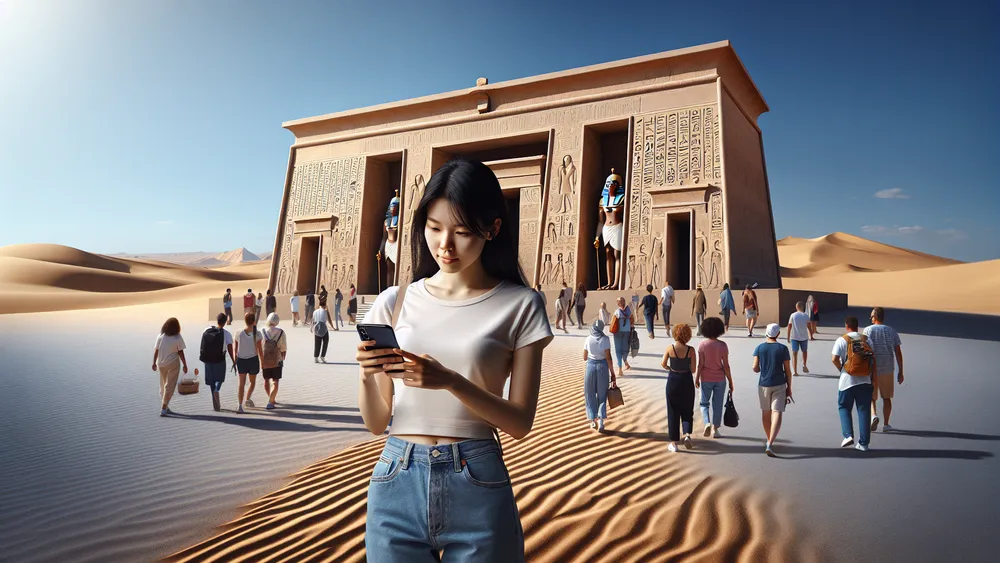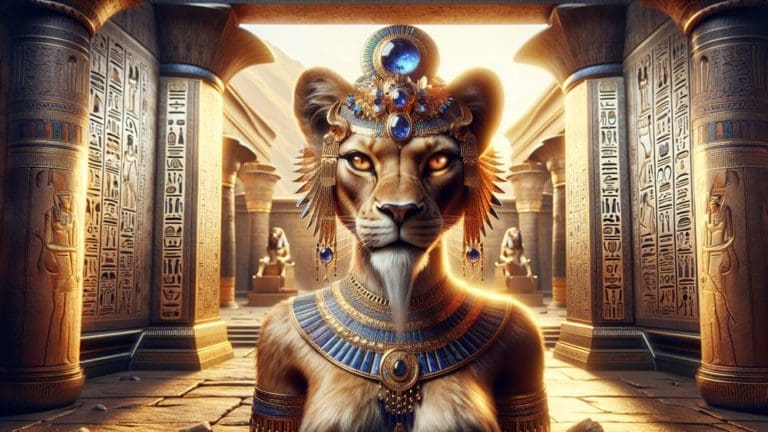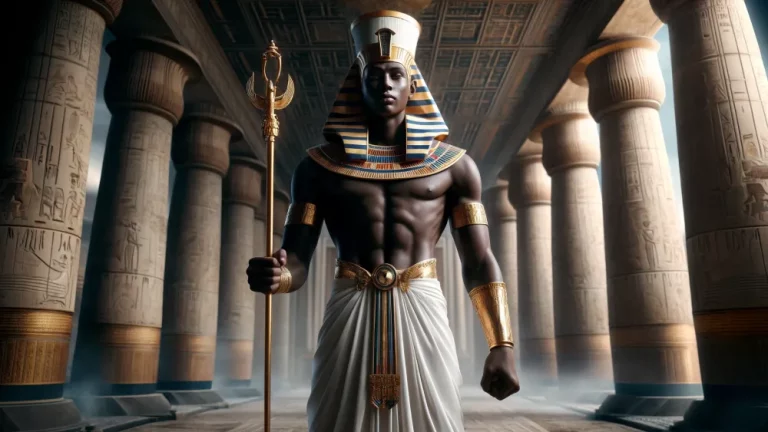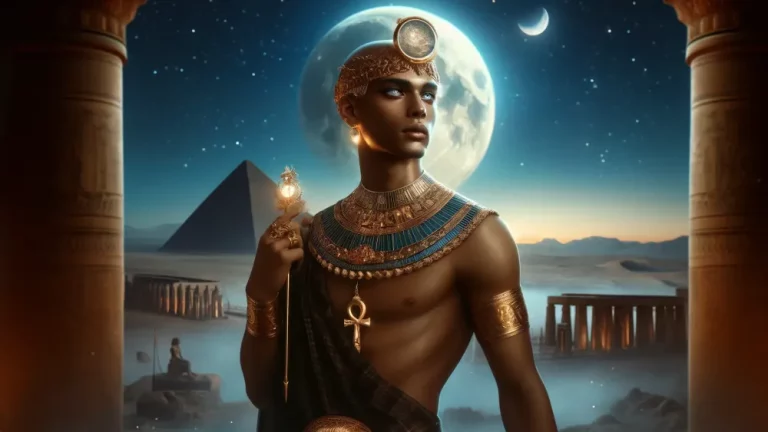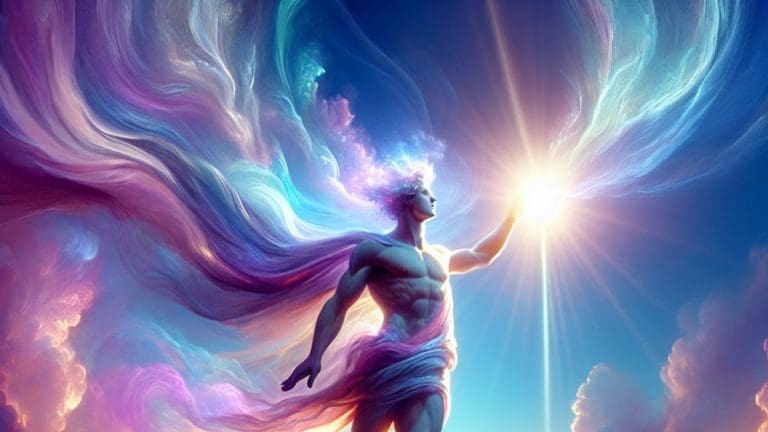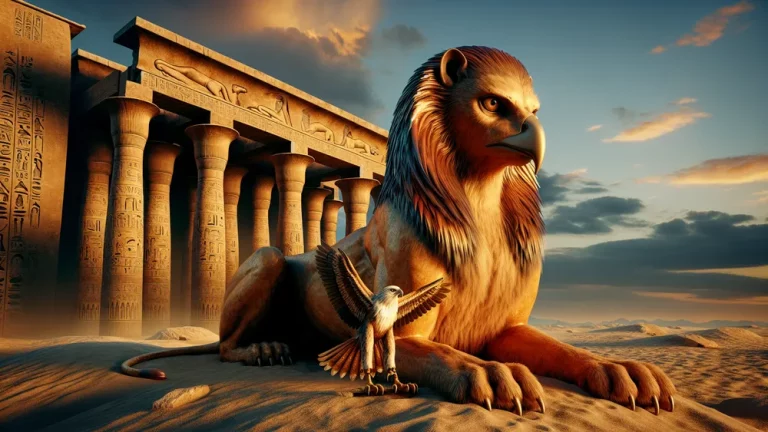Do People Still Believe In Egyptian Gods Today?
Considered whether old gods from Egypt like Ra, Isis, Osiris still matter today in the world? Just as some folks now keep following old ways and habits, there are those who still respect these old gods. In this blog post, we look at the interesting path of Egyptian gods from old times to their effect on today’s spiritual practices.
Key Points:
- Egyptian gods like Ra, Isis, and Osiris are still respected and followed today.
- Kemetism is a modern revival of ancient Egyptian religious practices.
- Egyptian gods played a central role in daily life, politics, and culture in ancient Egypt.
- Modern Kemetism groups exist globally and practice rituals to honor the old gods.
- The internet has been crucial in spreading and preserving Kemetism through online platforms.
- Similar to the revival of Greek and Roman gods, Kemetism faces challenges like doubt and legal issues.
- Egyptian gods have influenced various cultures and religions throughout history.
We look at the story of these gods, their effect on old Egyptian life, and how modern groups like Kemetism bring back these old beliefs. By the end, you will get a full idea of the lasting mark of Egyptian myths and their spot in the world now.
Do People Still Believe In Egyptian Gods: Overview and Key Facts
| Key Point | Description |
|---|---|
| Ancient Beginnings | Egyptian gods began in the early periods of Egypt, around 3100 BCE, and changed over many years. |
| Important Gods | Main gods are Ra (sun god), Isis (goddess of magic and mothers), Osiris (god of the afterlife), and Anubis (god of mummies). |
| Influence on Life | Egyptian gods were at the core of everyday life, affecting politics, culture, and social rules. |
| Beginning Again | Kemetism is a present-day bringing back of ancient Egyptian religious ways, focusing on believing in these gods. |
| World Groups | Many Kemetism groups exist globally, each with different customs and rites. |
| Internet’s Help | The internet has been key in sharing and keeping Kemetism alive through forums, social media, and websites. |
| Similar Beliefs | The return to Egyptian gods is like the revival of Greek and Roman gods, both having modern followers. |
| Struggles | Modern believers face doubt, legal issues, and social barriers in practicing and getting recognition for their faith. |
The History of Egyptian Gods
To grasp the long-lasting impact of Egyptian gods, you must look at how they started and changed in the old history of Egypt. So, let’s see how these gods began and their big influence on old life.
How Egyptian Gods Came to Be and Changed
The beginnings of Egyptian gods go back to the early times of Egypt, around 3100 BCE. These gods were first connected to natural things and events, like the sun, the Nile River, and the fertile ground. For example, Ra, the sun god, was thought to move across the sky during the day and go through the underground world at night, showing the cycle of life and death.
As the society in Egypt got more complicated, so did their group of gods, which showed the growing complexities of their life. The gods did not stay the same; they changed to match the changing needs and understandings of the people who believed in them.
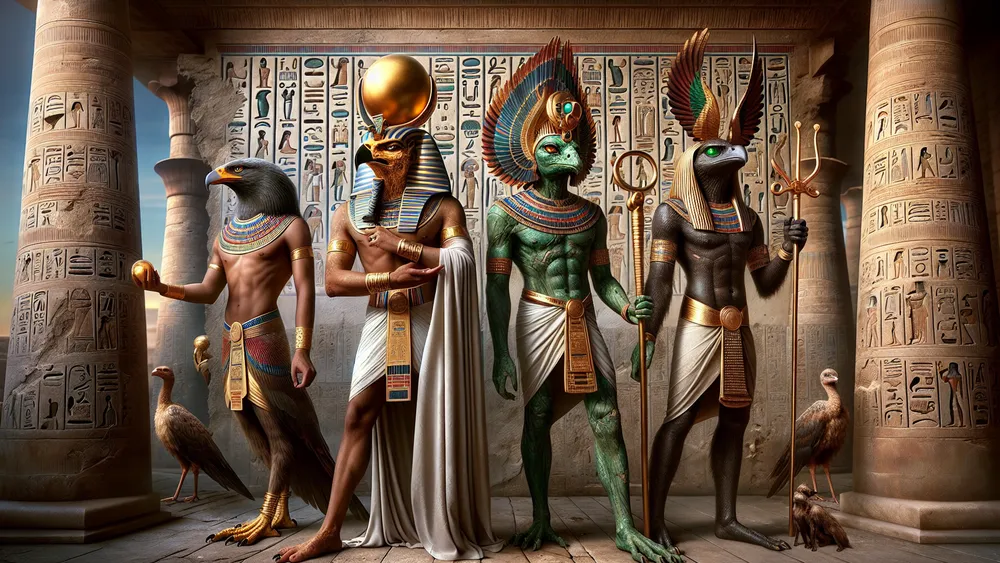
During the main periods of Egyptian history – the Old Kingdom, Middle Kingdom, and New Kingdom – the group of gods grew and shifted. In the Old Kingdom, gods like Ra and Osiris were central to religious practices. By the Middle Kingdom, Amon became important, later mixing with Ra to be Amon-Ra, a top god. The New Kingdom brought in new gods and mixing of old ones, showing the lively and changing nature of Egyptian religion. Below are some key Egyptian gods and their roles:
- Ra: Sun god and creator god.
- Osiris: God of the afterlife and coming back to life.
- Isis: Goddess of magic, motherhood, and growing things.
- Anubis: God of making mummies and the afterlife.
- Horus: Sky god and protector of the pharaoh.
- Amon-Ra: Mixed god of Amon and Ra, showing high power.
Egyptian gods evolved over time to reflect the changing beliefs and needs of the people, with key figures like Ra, Osiris, Isis, Anubis, and Horus playing vital roles in different periods of Egyptian history.
How Egyptian Gods Shaped Ancient Life
In old Egypt, the gods were deeply part of daily living, politics, and culture. Egyptians thought their gods ruled all parts of the natural and human world, like the Nile floods, their crops’ success, and battle outcomes. For example, farmers spoke to Osiris, god of farming and the afterlife, for good harvests, while families asked for Bastet’s protection, goddess of home and fertility.
The pharaoh, seen as a god on earth, played a key role in keeping ma’at, or world order, by doing rituals and building temples for the gods. This god-kingship kept the government structure strong and made the pharaoh’s rule accepted.
Rituals, festivals, and running the state were all deeply affected by the group of Egyptian gods. Big festivals like the Opet Festival celebrated the link between the pharaoh and the gods, helping the nation prosper. Temples were more than worship places; they were also centers for economy and social life, where priests did daily rituals to keep the gods happy and get their favor. These rituals had giving gifts, prayers, and big ceremonies thought to support the gods and, in turn, the world. Below are some of the big festivals and rituals for Egyptian gods:
- Opet Festival: Celebrated getting the pharaoh excited again and his divine link to Amon-Ra.
- Wepet-Renpet (New Year Festival): Began the new year, honoring many gods for a good year ahead.
- Sed Festival: A party that gave the pharaoh new energy and divine right to rule again.
- Beautiful Feast of the Valley: Honored the dead and celebrated the goddess Hathor.
- Feast of Min: Celebrated Min, the god linked with fertility and harvest.
How Ancient Egyptian Beliefs Are Making a Comeback
Moving from long ago to now, it is interesting to see how the respect for Egyptian gods is experiencing a modern return. Let’s look at how these old beliefs are being taken up today.
Modern Kemetism: Bringing Back Old Egyptian Religion
Kemetism, also called Kemeticism, is a new revival of old Egyptian religion, starting in the late 20th century. The word “Kemetism” comes from “Kemet,” the old name for Egypt, meaning “the black land,” which points to the rich soil near the Nile River. This new religious movement tries to bring back and practice the spiritual ways, beliefs, and actions of ancient Egypt.
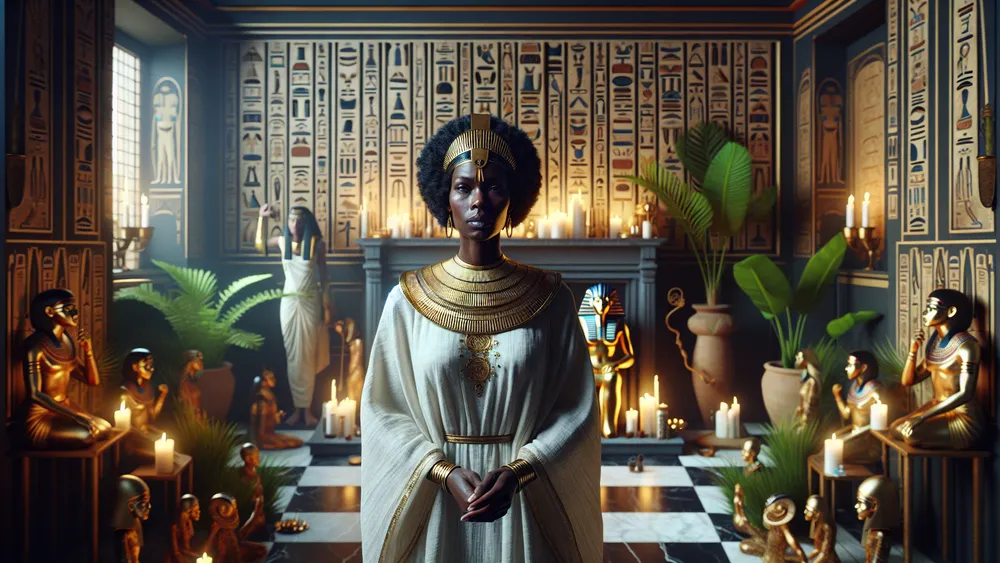
Kemetism is not one single tradition but a mix of groups and people who are all interested in ancient Egyptian spirituality. These people often use old texts, archaeological discoveries, and experts’ studies to guide their ways, trying to respect the gods and goddesses of old Egypt in today’s world.
The beliefs and actions of Kemetism are very much based on the old Egyptian view of the world but are changed a bit to fit today. In Kemetism, an important idea is ma’at, which means truth, balance, and order in the world. Followers try to live by these ideas through different rituals and ceremonies. Every day, doing things for the gods, meditating, and celebrating old festivals are common. For example, someone practicing Kemetism today might celebrate Wepet-Renpet, the old Egyptian New Year, with rituals to honor the gods and ask for good things in the next year. Below are some key practices and rituals in Kemetism:
- Daily Offerings: Giving food, drink, and other things to the gods.
- Meditation and Prayer: Doing reflective activities to connect with the divine.
- Celebration of Festivals: Observing old Egyptian festivals like Wepet-Renpet and the Opet Festival.
- Ritual Purification: Doing cleaning rituals to keep spiritual purity.
- Reconstruction of Ancient Temples: Making sacred spaces in homes or community areas to honor the gods.
Today’s Groups and Practices Around Egyptian Gods
Nowadays, there are many groups and gatherings that honor Egyptian gods, known together as Kemetic or Kemetic Orthodox groups. These groups are different in nature, from small casual meet-ups to highly organized religious bodies. For example, the House of Netjer, started by Rev. Tamara L. Siuda in the 1980s, stands out as one of the most well-known Kemetic Orthodox groups.
It provides structured teachings, rituals, and a shared sense of community. Another group, the Kemetic Temple of San Jose, focuses on local gatherings and community worship. Using online platforms, these groups connect with members, share resources, and plan events, making it simpler for people far away to join in.
The spread and makeup of these groups are quite mixed. While Kemetism has many members in the United States, especially in cities, it also has followers in Europe, Australia, and other regions. The people in these groups come from various backgrounds and professions but share a common interest in ancient Egyptian spirituality. Here’s a table showing different Kemetism groups and their practices:
| Community Name | Location | Key Practices and Rituals |
|---|---|---|
| House of Netjer | United States | Structured teachings, daily rituals, online forums |
| Kemetic Temple of San Jose | United States | Local gatherings, community worship, festivals |
| Tawy House | United Kingdom | Rituals, educational workshops, seasonal festivals |
| Per Ankh | Australia | Meditation, prayer, reconstruction of ancient rites |
| Akhet Hwt-Hrw | Canada | Ritual purification, offerings, online community |
This table shows the variety in practices and the spread of modern Kemetism groups, demonstrating how old Egyptian beliefs are being used and practiced in today’s world.
How the Internet Helps Spread These Ancient Beliefs
The internet is key in bringing back and spreading Kemetism, making it simple for people interested in ancient Egyptian beliefs to connect, learn, and do. Online forums like Reddit and websites such as the House of Netjer’s official site give places for talking, learning, and building community. Social media groups on Facebook and Instagram let practitioners share rituals.
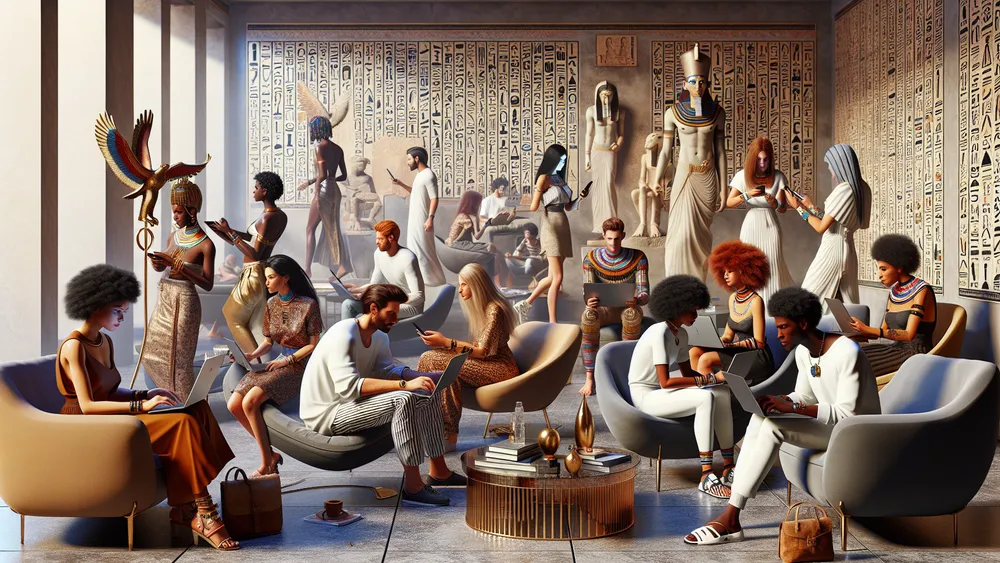
Celebrate festivals and help each other, just like fan clubs or hobby groups use these platforms to connect people with similar interests. These digital places have opened up access to information, letting people from all over the world join in Kemetism, no matter where they are. This connection has not only spread old beliefs but also created a sense of global community among today’s practitioners.
The internet plays a crucial role in reviving and spreading Kemetism by connecting individuals worldwide through online platforms like forums, websites, and social media groups, fostering a global community of practitioners.
How Egyptian Beliefs Compare with Other Old Religions
Now that we have looked at the modern return of Egyptian beliefs, it’s useful to see how these ways match up with other old religions that have also come back. Let’s look at these similarities and differences.
Comparing Egyptian Beliefs With Greek and Roman Ones
The return to Egyptian gods, called Kemetism, has many things in common with the modern return to Greek and Roman gods, known as Hellenism and Roman Reconstructionism. These movements started in the late 20th century, as part of a larger trend to bring back old religions.
Similar to how Kemetism aims to bring back the spiritual customs of ancient Egypt, Hellenism and Roman Reconstructionism seek to revive the worship of the Greek and Roman gods. They often look to historical books, findings from digs, and academic studies to recreate old rituals and beliefs. For example, just as Kemetic followers celebrate old Egyptian festivals, Hellenists might observe the ancient Greek festival of Panathenaia, and Roman followers might celebrate Saturnalia.
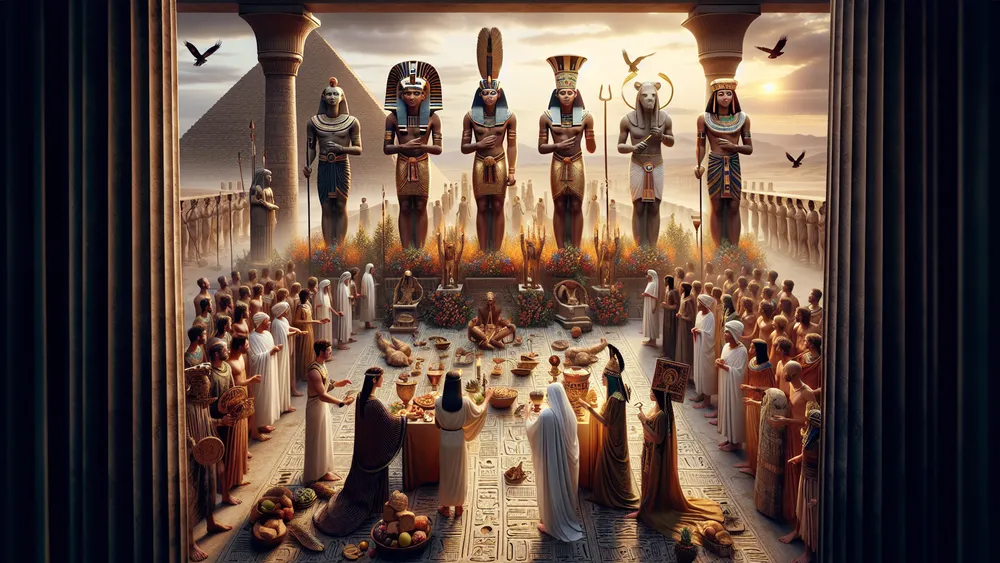
But, there are clear differences in beliefs, practices, and the way communities are set up among these reborn religions. Kemetism, Hellenism, and Roman Reconstructionism each have distinct takes on their old traditions. For instance, Kemetism focuses a lot on ma’at (truth and cosmic order), Hellenism emphasizes arete (excellence) and eusebeia (piety), and Roman Reconstructionism highlights pietas (duty) and virtus (courage). Also, the way these communities are built can be different; some groups are very organized with formal memberships and set rituals, others are more loose and spread out. Here are some key similarities and differences:
- Similarities:
- Differences:
Egyptian Gods’ Influence Around the World
Egyptian gods have made a strong mark on many other cultures and religions over the years, affecting both old and new belief systems. For example, the goddess Isis was widely respected in the Roman Empire, seen as a mother figure for all, much like how well-known characters from stories or books go beyond their original settings to become worldwide figures.
Today, Isis is still honored in many neo-pagan and spiritual groups, showing that Egyptian deities have a lasting appeal. Also, the god Thoth, who is linked with wisdom and writing, has connections to the Greek god Hermes, showing how Egyptian gods were added into other groups of gods.
These cases show the wide-reaching impact of Egyptian gods, proving how their traits and stories have been taken in and valued in different cultures and times.
Problems and Debates
While the return of old Egyptian beliefs has gained attention and followers, it has also led to many problems and arguments. Let’s look at some of these challenges.
Doubts and Criticism of Modern Practices
People practicing modern Kemetism face doubt and critical views, similar to how fans of historical reproductions get questioned about how true their acts are. Some argue that today’s ways might not show ancient Egyptian rituals correctly because of missing pieces in old records and the effect of new interpretations. This doubt comes from worries about the truth and rightness of bringing back a religion that has been asleep for thousands of years.
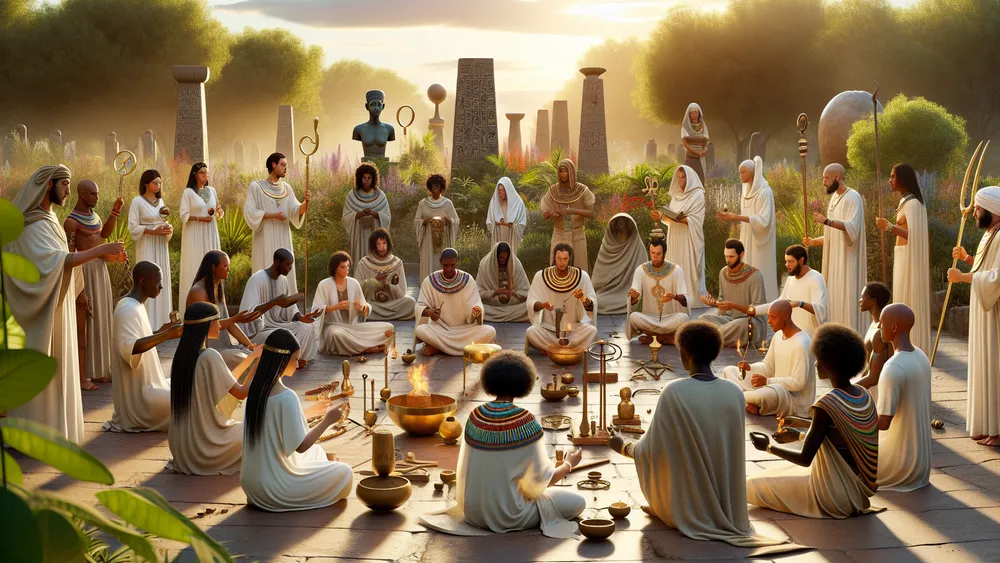
Yet, those following Kemetic ways stress their commitment to researching history and using archaeology to shape what they do. They also point out the significance of community and shared experiences to make their spiritual path valid, much as how fans of historical reproductions find worth in their joint efforts to revive the past.
Legal and Social Hurdles
People following Kemetism often face big law-related and social difficulties, like other small religious groups trying for acknowledgment and acceptance. Some places have rules about religious freedom that do not always include new or less common religions, making it hard for Kemetic followers to get official acknowledgment.
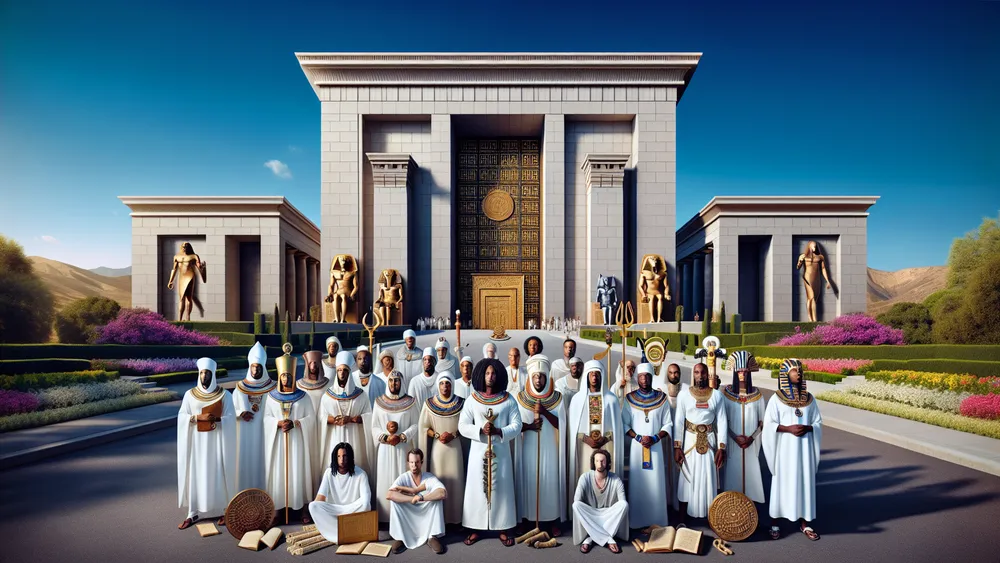
When they don’t get this acknowledgment, problems appear like not being able to set up officially recognized worship places or hold legally acknowledged ceremonies. Socially, they might meet bias or misunderstanding from people who don’t know about their beliefs, similar to how fans of unusual hobbies might get doubt from the wider public.
But even with these challenges, Kemetic groups keep working for their rights, aiming to teach others and get the acknowledgment and law-related acceptance they need to practice their belief system openly and freely.
FAQs
1. How does Kemetism differ from ancient Egyptian religion?
Kemetism differs from ancient Egyptian religion primarily in its adaptation to modern contexts and the absence of a centralized state religion.
2. Are there any temples dedicated to Egyptian gods today?
There are modern temples dedicated to Egyptian gods today, primarily established by practitioners of Kemetism.
3. How do practitioners of Kemetism view the pharaohs?
Practitioners of Kemetism view the pharaohs as important historical figures and intermediaries between the gods and humanity.
4. Can someone join Kemetism, and how?
To join Kemetism, individuals typically start by studying its beliefs and practices, and then participate in rituals and community activities.

